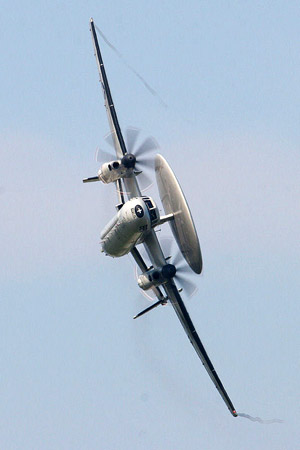Navy Version of F-35: “The Weakest Link”?

Could trouble (Ok. more trouble) be brewing over in JSF-land? Comes an article today from the Paris Airshow that floats "concerns" from the Air Force over progress in the CV-version of the F-35 (the F-35C). Unlike the -A or -B model, the USN will be the only customer for the -C.
Of the aircraft now “in flow,” according to the U.S. Air Force, five are conventional-takeoff planes designated F-35A, five are short-takeoff-and-landing (STOVL) F-35Bs and only two are the carrier variant (CV) the Navy plans to buy.
Brig. Gen. C.R. Davis, the Air Force’s F-35 program executive officer, said in a June 20 press conference at the Paris Air Show that the CV also is the farthest behind in terms of drawing up the plans. With 73 percent of the drawing complete on the entire F-35 fleet, only about 60 percent of the CV drawings are done.
“Each of the variants is at a different point on the evolutionary curve,” Davis said, calling the CV the “least mature design” of the program.
Cost savings, as everyone knows, are the order of the day inside and out of the Beltway and ways to trim what is rapidly becoming the most expensive tactical aircraft program in history are being sought. Taking on the appearance of an emerging furball, all players are jumping in, from the think tanks:
Two of four suggestions put forward June 20 by the Center for Strategic and Budgetary Assessments (CSBA) in Washington involve scrapping the carrier variant. Killing the Navy version of the plane and buying F/A-18E/Fs could save the Pentagon between $450 million and $550 million, according to the CSBA. Halving the Air Force’s order on top of that and filling the gaps with more Super Hornets for both services would save up to $1.1 billion, the CSBA study says.
to the contractors (Boeing is pushing the Super Hornet as a viable, less expensive alternate, which in turn, would give it leverage in the extremely lucrative Indian MRCA competition) to the Services themselves (including some disinformation – surprise, surprise…)
Blood’s starting to show in the water, and around these parts it gets deadly pretty fast…


SJS,
Correct me if I’m wrong, but isn’t the 35-c leaps and bounds ahead of the F-18 variants in terms of maneuverability, speed, situational awareness, air to air, and air to ground capability? And, if that’s so, why is NAVAIR so hot for the F-18 variants?
May be, may be not. F-35C is still a paper airplane whereas the A and soon the B are/will be flying. NAVAIR is probably starting to see the writing on the wall – declining defense budgets and need to rebuild Army and Marines over the next decade, combined with burning up the flight life of the legacy Hornets much faster than planned, and is beginning to think a Super Bug with AESA and some other tweaks for 49.9M ea. is probably a bargain in comparison.
– SJS
SJS,
of course, I suppose that simply telling the Marines that they arten’t going to be having a need for the STOVL variant isn’t an option?
Seems to me that the only thing the STOVL variant is guarenteed to do is screw up flight deck ops, and take up precious space on the assault carriers. There’s also the p[esky issue(s) of spare parts for what was supposed to be a common fighter. But I digress.
Why not cancel the STOVL variant, push on with the Navy wariant, and if the Marines need something different, besides Harriers, Hornets, Seahawks, SeaCobras, Ospreys, etc, perhaps they’d be interested in a navalized version of the A-10?
Of course, my solution to many of the procurement problems is to simply dissolve the USAF and give all their stuff back to the Army… heh.
Respects,